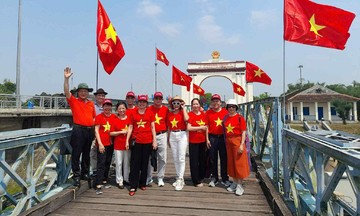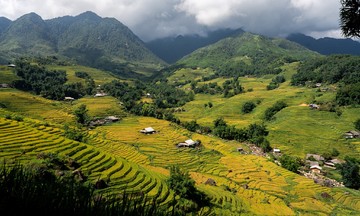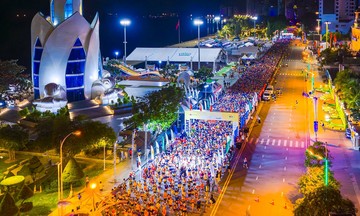In a July article in the Daily Telegraph, Australian journalist Ronan O’Connell recounted his first trip to Vietnam 18 years ago, and his 18 subsequent visits. For him, Vietnam is not only a favorite destination in Asia but also a place intertwined with important life milestones: his first solo trip, his marriage proposal, learning he was going to be a father, and his final journey with his late father.
Over nearly two decades, O’Connell has witnessed Vietnam's daily transformations, from its evolving cityscape and tourism approach to the pervasive positive energy. He believes Vietnam is thriving economically and as a travel destination, rising from relative obscurity to become a top contender in Southeast Asia, with international arrivals increasing over 40% in just one year.
"Vietnam is a destination I never tire of; each return brings new experiences," O’Connell said, affirming his intention to continue exploring the country's diverse facets.
O’Connell is not alone. Many other tourists frequently revisit Vietnam. Australian tourist Ken Rafter has brought his family to Vietnam for two consecutive years. They've journeyed through numerous destinations from north to south, including Hanoi, Ninh Binh, Ha Long, Tam Coc, Da Nang, Hoi An, Ho Chi Minh City, and Vung Tau.
 |
Ken Rafter (right) and his family in Da Nang in 4/2023. Photo: NVCC |
Ken Rafter (right) and his family in Da Nang in 4/2023. Photo: NVCC
"We love the Vietnamese lifestyle and friendliness every time we visit," Rafter said, praising the accessible visa policy and increasingly modern urban infrastructure with its numerous skyscrapers.
According to a survey by online travel platform Agoda based on first-half 2025 accommodation data, Vietnam ranks third in Asia for repeat visitors, behind only Japan and Thailand.
According to the General Statistics Office, in the first six months of 2025, international arrivals to Vietnam reached nearly 10.7 million, a nearly 21% increase compared to the same period last year. Vietnam welcomed 1.46 million international visitors in June, typically a low season month, up over 17% year-on-year. In total, 10.7 million international visitors arrived in Vietnam during the first half of the year, a nearly 21% increase compared to the same period in 2024 and nearly 26% higher than in 2019, considered a golden year for Vietnamese tourism.
Compared to the Vietnam National Administration of Tourism's target of 25 million visitors this year, actual arrivals in the first six months have only reached approximately 49%. Many travel agency CEOs believe Vietnam could reach 22 million visitors, as the peak travel season (October-December) is the period for significant growth when tourists flock to avoid crowds.
According to the May issue of the UN World Tourism Organization's (UNWTO) World Tourism Barometer, Vietnam experienced the sixth-highest international tourist growth globally in Quarter I of 2025, up 30% compared to the same period in 2024. Within the Asia-Pacific region, Vietnam ranked first, followed by Japan and Palau.
Vietnam also ranked second in international tourism recovery (up 34% compared to 2019) and 4th in total tourism revenue growth, at 29%, compared to 2024.
This growth, even during the low season, indicates Vietnam's success in attracting international tourists.
In an August article, American travel news site Travel Off Path, with over 6 million monthly readers, highlighted five factors contributing to Vietnam's appeal: historical heritage sites like Hoi An Ancient Town, the Hue Imperial Citadel, and the Cu Chi Tunnels; affordability compared to other regional countries; diverse landscapes from Ha Long Bay and Sa Pa to Phong Nha-Ke Bang National Park and Ban Gioc Waterfall; rich cuisine from pho and banh mi to street food; and above all, Vietnamese hospitality.
Dr. Daisy Kanagasapapathy, Deputy Head of the Department of Tourism and Hospitality Management at RMIT Vietnam, told VnExpress that extending e-visas to all nationalities for 90 days with multiple entries has removed previous barriers like complex visa procedures, short stays, and inflexibility for return trips. Expanding the list of visa-exempt countries also makes Vietnam more attractive and accessible compared to its neighbors.
Vietnam has significantly enhanced its air connectivity. Dr. Kanagasapapathy noted that "Vietnam's skies have never been busier," thanks to expanded international routes, including direct flights from major cities in Europe, North America, and the Middle East.
"This increased connectivity plays a key role in attracting tourists from key markets like China, South Korea, Japan, and the US, as well as the significant increase in European tourists from the UK and Germany," she said, adding that the government and tourism sector have effectively leveraged historical milestones like the 50th anniversary of the reunification of Vietnam and the 80th National Day on 2/9.
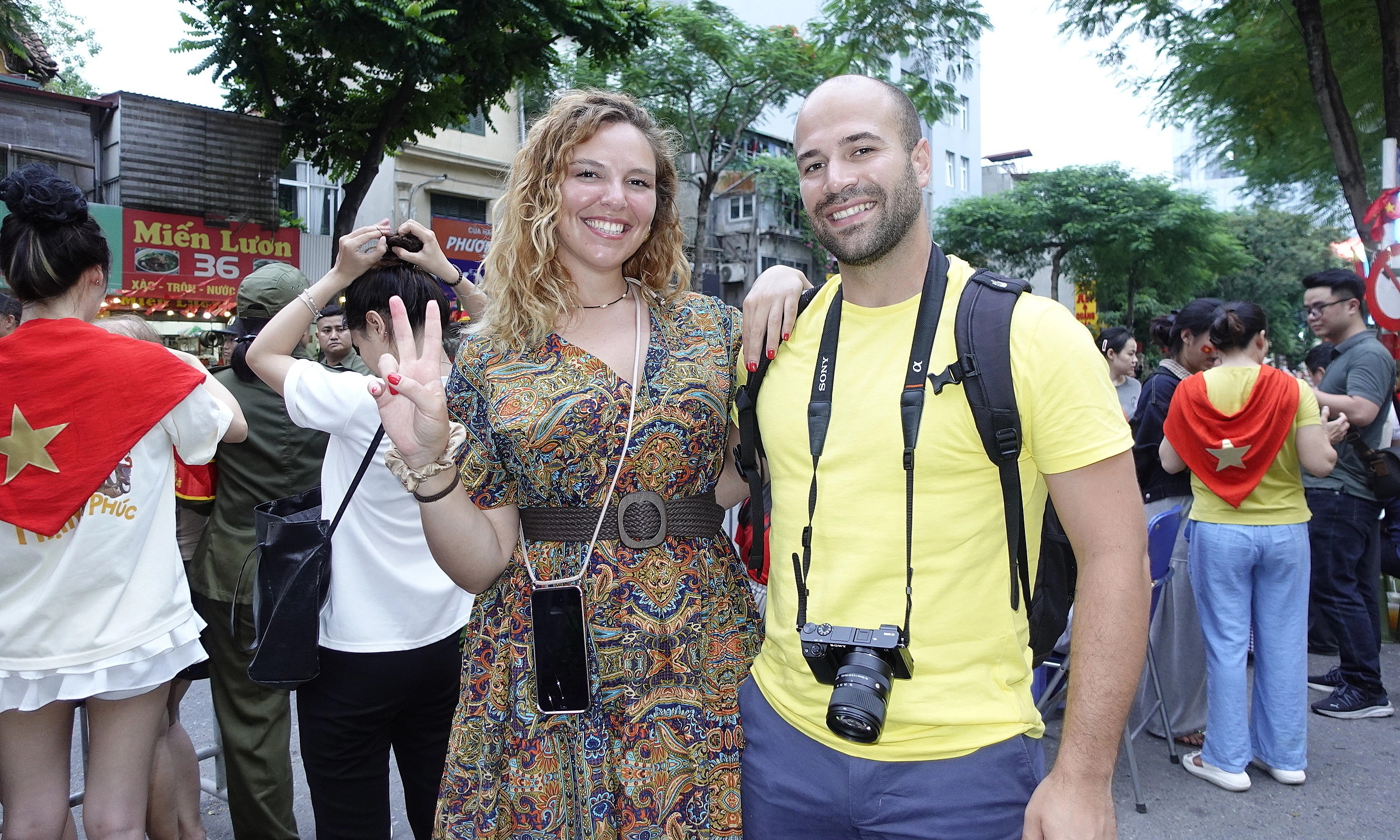 |
Claudia and Pietro pose with Vietnamese people queuing to watch the parade. Photo: Tu Nguyen |
Claudia and Pietro pose with Vietnamese people queuing to watch the parade. Photo: Tu Nguyen
These national events resonated with both domestic and international tourists seeking rich cultural experiences and historical depth.
She also emphasized Vietnam's focus on diversification by exploring niche tourism trends, a pioneering approach to cater to diverse audiences beyond traditional vacationers.
A prime example is Vietnam's promotion of Halal tourism. By investing in Halal food certification, promoting Halal-compliant accommodations, and increasing access to prayer facilities, Vietnam is becoming a welcoming destination for tourists from Muslim-majority countries like Indonesia, Malaysia, and the Middle East.
Dr. Jackie Ong, Senior Lecturer in Tourism and Hospitality Management at RMIT, added that Vietnam is broadening its appeal beyond beach tourism and traditional culture. Adventure tourism like trekking, cave exploration, and motorbike tours, along with wellness retreats, ecotourism, and community-based tourism, attract new groups seeking unique experiences.
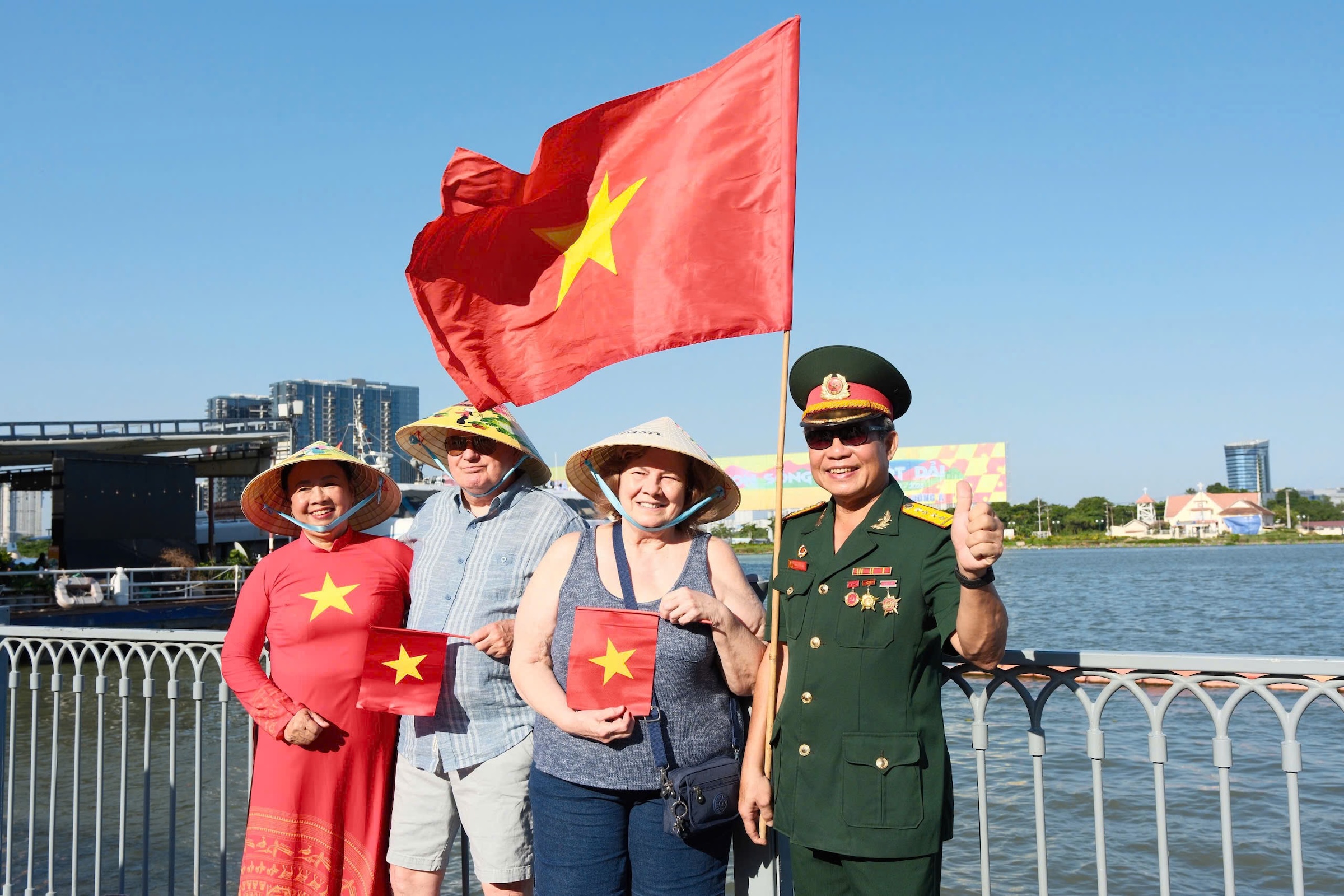 |
American veteran Gary (second from left) returns to Ho Chi Minh City for the 50th anniversary of the reunification of Vietnam. Photo: Bich Phuong |
American veteran Gary (second from left) returns to Ho Chi Minh City for the 50th anniversary of the reunification of Vietnam. Photo: Bich Phuong
Vietnam is also focusing on the Halal tourism market, catering to Muslim tourists from Indonesia, Malaysia, and the Middle East by developing Halal food services, suitable accommodations, and access to prayer spaces.
Tourism infrastructure is also improving. Airport expansions in major cities not only enhance the travel experience but also make it easier for tourists to explore different regions. Concurrently, promotional campaigns like "Explore Vietnam" and "Vietnam - A Year-Round Destination" are increasing global visibility through digital platforms, collaborations with influencers, and traditional media.
According to experts, to maintain this momentum, the tourism sector needs to focus on five pillars: sustainable development, digitalization, exploring new potential in lesser-known destinations, attracting high-value tourists, and investing in human resource training.
"Vietnam is ideally positioned to maintain its growth trajectory and become a leading global destination, promising a bright future for tourism and the national economy," Dr. Jackie Ong emphasized.
Bich Phuong




